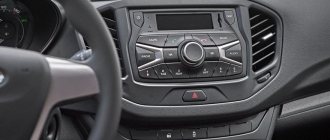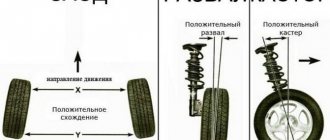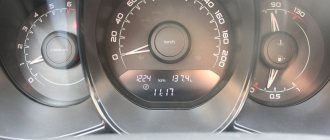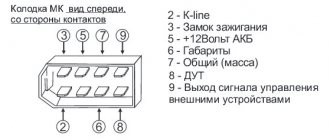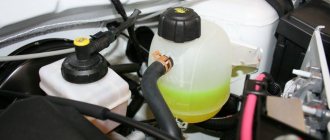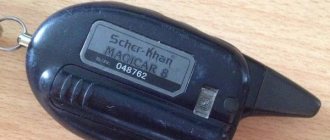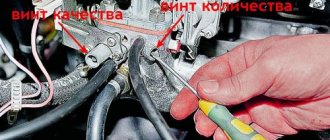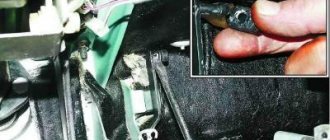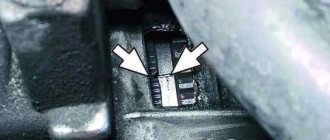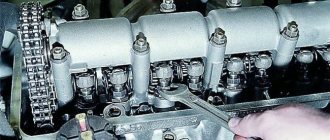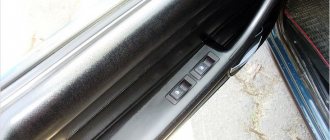What is a radar detector and why does a driver need it?
A radar detector is a radio receiver of a police radar designed to measure the speed of a moving vehicle. The radar detector promptly warns the driver when approaching a dangerous section of the road, where vehicle speed is monitored. A radar detector helps not only save money, but also preserve the health and life of the driver, his passengers and pedestrians. When the radar detector detects a signal from police radar or video cameras, it alerts the driver with an audible and visual alarm. In most cases, the radio signal from radars and cameras is detected by the device long before the car enters the zone where the violation is detected; the driver reduces speed in a timely manner and avoids unpleasant fines. The purchase of a radar detector often pays for itself after the first week of using the device.
If previously traffic police officers were wary of the use of such electronic devices, now modern models of radar detectors actively contribute to ensuring road safety. Knowing that an increasing number of drivers use radar detectors, traffic police officers often install beacons - “false” radars, the signal of which forces drivers to reduce their speed in front of dangerous sections of roads.
At what distance from the radar does the detector warn the driver of “danger”?
The range of a modern radar detector is 5-8 times greater than the range of a police radar. Radar detectors are capable of detecting active traffic police radar in urban environments at a distance of 1-3 km, and in open areas the range of the device can reach 5 km.
How does the Strelka radar complex work?
The operating principle of Strelka is based on the Doppler effect: calculating the speed of a moving object by comparing the frequencies of the signal emitted and reflected from the object. "Strelka" emits short pulses (approximately 30 nanoseconds) in the K-band, allowing you to accurately measure the speed and range of all cars, both approaching and receding, falling within its coverage area, regardless of the density of traffic flow - up to 4 lanes within 500 m from the installation site. Photo recording of the violation is carried out at a distance of 350 to 50 m, which makes it possible to identify vehicles with clearly visible license plates that have exceeded the established speed limit. All information received about a violation is automatically sent to the situation center. Based on the data received, a receipt for payment of the fine is issued, commonly called a “chain letter,” and sent to the address of the vehicle owner.
What is the difference between a radar detector and an anti-radar?
A radar detector is a passive receiver of a radio signal of a certain frequency, which does not suppress the received signal with an amplified signal of the same frequency, warning the driver that within its range of action it has detected signals of certain frequency ranges. These devices are not prohibited for sale and use in Russia and most other countries of the world.
A radar detector is an active suppressor of the received signal. When a signal of a certain frequency is detected, the suppression mode is activated - emission of a stronger signal distorted by modulation (noise). The use of such devices is prohibited by law, since such devices are powerful emitters of radio signals in frequencies prohibited for use by private individuals.
Very often you can hear a radar detector called a “radar detector” or even a “radar”. From a technical point of view, this is not entirely true, but in colloquial speech it is much more convenient to use the short names “radar” or “radar detector” rather than the cumbersome, but technically and fundamentally correct “radar detector”. All “radars” and “radar detectors” presented at retail points of sale in Russia are exclusively radar detectors - passive receivers of police radar signals.
How to properly install a radar detector in a car?
The manufacturer provides two options for installing the radar detector in the car interior: on the dashboard using Velcro fastener and on the windshield using a special bracket with suction cups. Both Velcro and bracket are included with any device. Sometimes manufacturers additionally equip the radar detector with an adhesive-based magnet. The installation location of the detector must be consistent with the length of the power cable. The radar detector should not interfere with the driver's ability to drive; The device must not pose a risk of injury to the driver or passengers in the event of sudden braking.
What determines the correct operation of the radar detector?
In order for the device to perform high-quality detection of ALL security cameras, promptly notify the driver and function smoothly, without lags or freezes, the following points should be taken into account:
- It is important to install the radar detector in the correct location;
- It is equally important to configure the radar detector correctly;
- Connecting the gadget should be carried out strictly according to the instructions;
- The quality of the product itself also affects the detection efficiency of cameras. You should not expect high accuracy and efficiency from a cheap Chinese device;
- Don't forget to periodically update the database of cameras stored in your device. This determines whether it will ensure their complete detection;
- The radar detector should be used strictly for its intended purpose. An exception is if you have a hybrid device (radar + DVR, etc.);
Also keep in mind that the correct detection of police radars and traffic cameras is also influenced by third-party factors that are in no way dependent on the gadget and cannot be configured. For example, the terrain (traffic cops with a camera are hiding on a hillock, and there is a depression in front of it), roadside objects (a glass building in front of a turn, behind which there is a post), weather conditions, traffic jams, third-party sources of radio wave radiation in a similar frequency range, etc. .d.
In short, even the most optimal setting of a radar detector cannot guarantee 100% protection from a fine from a surveillance camera. In contrast, by the way, to the personal rule - drive without exceeding. But this article is not about morality, so let’s move on!
dnzjoker › Blog › Questions and answers about radar detectors
What is a radar detector and why does a driver need it?
A radar detector is a radio receiver of a police radar designed to measure the speed of a moving vehicle. The radar detector promptly warns the driver when approaching a dangerous section of the road, where vehicle speed is monitored. A radar detector helps not only save money, but also preserve the health and life of the driver, his passengers and pedestrians. When the radar detector detects a signal from police radar or video cameras, it alerts the driver with an audible and visual alarm. In most cases, the radio signal from radars and cameras is detected by the device long before the car enters the zone where the violation is detected; the driver reduces speed in a timely manner and avoids unpleasant fines. The purchase of a radar detector often pays for itself after the first week of using the device.
If previously traffic police officers were wary of the use of such electronic devices, now modern models of radar detectors actively contribute to ensuring road safety. Knowing that an increasing number of drivers use radar detectors, traffic police officers often install beacons - “false” radars, the signal of which forces drivers to reduce their speed in front of dangerous sections of roads.
At what distance from the radar does the detector warn the driver of “danger”?
The range of a modern radar detector is 5-8 times greater than the range of a police radar. Radar detectors are capable of detecting active traffic police radar in urban environments at a distance of 1-3 km, and in open areas the range of the device can reach 5 km.
How does the Strelka radar complex work?
The operating principle of Strelka is based on the Doppler effect: calculating the speed of a moving object by comparing the frequencies of the signal emitted and reflected from the object. "Strelka" emits short pulses (approximately 30 nanoseconds) in the K-band, allowing you to accurately measure the speed and range of all cars, both approaching and receding, falling within its coverage area, regardless of the density of traffic flow - up to 4 lanes within 500 m from the installation site. Photo recording of the violation is carried out at a distance of 350 to 50 m, which makes it possible to identify vehicles with clearly visible license plates that have exceeded the established speed limit. All information received about a violation is automatically sent to the situation center. Based on the data received, a receipt for payment of the fine is issued, commonly called a “chain letter,” and sent to the address of the vehicle owner.
What is the difference between a radar detector and an anti-radar?
A radar detector is a passive receiver of a radio signal of a certain frequency, which does not suppress the received signal with an amplified signal of the same frequency, warning the driver that within its range of action it has detected signals of certain frequency ranges. These devices are not prohibited for sale and use in Russia and most other countries of the world.
A radar detector is an active suppressor of the received signal. When a signal of a certain frequency is detected, the suppression mode is activated - emission of a stronger signal distorted by modulation (noise). The use of such devices is prohibited by law, since such devices are powerful emitters of radio signals in frequencies prohibited for use by private individuals.
Very often you can hear a radar detector called a “radar detector” or even a “radar”. From a technical point of view, this is not entirely true, but in colloquial speech it is much more convenient to use the short names “radar” or “radar detector” rather than the cumbersome, but technically and fundamentally correct “radar detector”. All “radars” and “radar detectors” presented at retail points of sale in Russia are exclusively radar detectors - passive receivers of police radar signals.
How to properly install a radar detector in a car?
The manufacturer provides two options for installing the radar detector in the car interior: on the dashboard using Velcro fastener and on the windshield using a special bracket with suction cups. Both Velcro and bracket are included with any device. Sometimes manufacturers additionally equip the radar detector with an adhesive-based magnet. The installation location of the detector must be consistent with the length of the power cable. The radar detector should not interfere with the driver's ability to drive; The device must not pose a risk of injury to the driver or passengers in the event of sudden braking.
What are false alarms and how can you minimize the number of false radar detector alerts?
False signals are radio signals from foreign devices operating in the ranges of police radars, but having nothing to do with the latter. For example, automatic store doors can operate in the X- and K-bands, signals from satellite equipment can be detected by a radar detector in the X-band, and in areas adjacent to airports, radio signals of all ranges, as well as laser signals, can be detected.
Where to install the radar detector?
Before we move on to properly setting up the radar detector, let's discuss where it should be located. If you don’t want to get a fine, remember that the gadget should not obstruct the driver’s view. This applies to any auxiliary automotive equipment. By the way, the fine for this violation is 500 rubles.
To correctly detect cameras and radars, it is advisable to install the radar detector on the windshield (near the rear view mirror) or on the dashboard (in the central part). Here are the general rules for choosing the ideal installation location:
- The gadget must be positioned strictly parallel to the road and as high as possible, therefore, most often it is mounted on the windshield;
- Other devices should not interfere with the radar detector’s ability to easily “catch” other people’s radio waves or radiation;
- Make sure that there are no metal objects or equipment near the radar detector (to prevent signal distortion);
- The device should not be within the range of windshield wiper blades, sun strips and other windshield tuning elements;
- Installation is carried out using fastening components from the original equipment of the device;
- Do not use two radar detectors in one car at the same time.
Please note that tinting, as well as violet athermal glass, significantly impair the sensitivity of the radar detector, which affects the quality of camera detection.
Design features, manufacturers and price
According to design features, it is customary to distinguish:
- Multifunctional devices that combine several devices at once. For example, a video recorder and a radar detector.
- Detectors consisting of several components installed in different parts of the car. Such detectors are installed once and for all, and therefore are not very popular among car owners.
- Monoblock devices are the most popular devices, representing a small block that can be placed either on the glass or dashboard, or behind the interior rearview mirror.
Also, having decided to acquire a radar detector, the driver must decide on the available budget, since depending on the functionality, type, dimensions and material of the case, the price of the device also changes, which can reach $400.
PlayMe has proven itself well in the Russian radar detector market
The best products on the market have proven themselves to be products from PlayMe, Street Storm, Cobra and Whisler, which, although a little more expensive than their main competitors, have the best price/quality ratio. If your budget is limited, you can take a closer look at the products of Karkam, Inspector, ParkCity and Neoline.
How to connect?
We continue our article, and then we will tell you how you can correctly configure the radar detector in your car. Let's start with connection methods, of which there are several:
Directly from the cigarette lighter. Simply, using the cord included in the kit, connect the gadget to the cigarette lighter socket. The disadvantage of this method is that wires will constantly dangle in front of your eyes, which is annoying and incredibly annoying. This is why many car owners prefer more complex methods that can be used to perform hidden installation;
To the lampshade on the ceiling.
- First install the radar detector at the selected location;
- Unscrew the lampshade and carefully disassemble the structure down to the hardware elements;
- Stretch the cable from the radar detector to the ceiling lining under the ceiling trim, first clean the end with the contacts;
- Find the wire with “plus” and “minus” on the lampshade and connect it correctly to the cable from the radar detector (the diagram should be in the gadget’s instructions);
- Return the lampshade to its place;
- Ready.
To the ignition system. This method is the most difficult, and therefore, if you are not strong in electrical engineering, we advise you to turn to experienced craftsmen.
- Install the radar detector at your “permanent place of residence”;
- Carefully remove the upholstery from the side pillar (possibly also from the threshold);
- Stretch the radar detector cable along the groove in the rack, and bring it out in the area of the lower part of the front panel of the car (dashboard);
- Bring the wire to the block;
- Solder and insulate the gadget's power cable with the 12-volt wire of the block (identify it with a multimeter). The connection is made through a fuse;
- Return the upholstery to its place, hide the block;
- Ready.
Geely Coolray Flagship Sport › Logbook › Installing a radar detector without unnecessary wires
I decided to install a radar detector in my car. I have always installed it on all cars myself; I don’t like a busy cigarette lighter and hanging wires like vines from recorders and radar detectors.
The sequence of actions was as follows. Open the fuse cover in the passenger compartment, turn it over and look at the markings and ratings of the fuses. You need fuse F17 (power is supplied in the ACC position, it also powers the built-in DVR on the front under the car icon).
To connect a radar detector with a 12 V (3.5 mm) pin power supply, you also needed: a fuse splitter into 2 parallel lines with connection to the standard locations of the fuse box (on aliexpress it costs approximately 70-80 rubles). We use "Mini" type fuses
A set of power wiring for the radar detector (with a 3.5 mm Jack), bought at a local auto electronics store for 250 rubles (also available on Aliexpress). The wiring consists of a positive cable with a fuse bulb, and a negative cable ending with a flat “plug”. If you cannot find this power supply kit for the radar detector, but there is a standard power wire that ends with power from the cigarette lighter, then as a last resort you can cut off the end segment and leave only 2 power wires. PS this all applies to a radar detector with a 12 volt power supply! (I don’t know if there are radars with 5 volts or with a different voltage, but I think it’s necessary to warn you).
Next, we look at the left end cap of the torpedo, there is a groove in the lower part, insert there either a tool for removing plastic car parts or just a flat-head screwdriver, preferably wrapped with a little cloth (you can stick an adhesive plaster on the tip of the screwdriver) so as not to damage or scratch the plastic.
Then you need to unclip the front left pillar. We release and bend the rubber door seal, then take the front pillar trim and gently pull it towards ourselves (towards the opposite pillar). Stand with 3 pistons. First it will snap off, then to pull it out you need to pull it towards the ceiling (up). We install the power connector for the radar detector in the corner of the windshield, and lower the wire itself down into the interior fuse niche. We take out fuse F17, in its place we insert the fuse splitter on line 2, and the removed fuse into the splitter. Thus, in place of F17 we have 2 lines, each of which is parallel and protected by its own fuse. Line 1 is completely standard, line 2 is power output for additional devices.
Next, we connect the flat plug of the negative power wire (black cable) to the vehicle ground. In the niche of the torpedo, unscrew the bolt 8 mm, insert the plug and tighten it back.
How to configure for proper camera detection?
Now let's look at how to set up a radar detector correctly, because the detection efficiency of traffic police cameras directly depends on this.
By the way, so far we have considered issues related to the operation of a stationary radar detector. However, mobile applications with a detector option have also become widespread among modern drivers. They have a slightly different principle of operation - they search for cameras via GPS, therefore they do not pick up police radars. However, they undoubtedly have their benefit in detecting tracking components on the road, so we will also tell you how to set up free radar detectors on your phone.
How to set up a separate gadget?
The radar detector is usually configured once, after which the settings are saved in memory. The exception is if you had to perform a factory reset. After this procedure, the device will need to be configured again.
- The first step is to configure the radar detector in Russian or English (if there are any in the Menu). See the instructions for using the gadget for the algorithm.
- The next step is to configure frequency ranges, in particular, disable unnecessary ones. In Russia today, almost all speed meters and cameras operate in the K-band. Radars operating in the X-band are considered relics of the past, but they have been taken out of service almost everywhere (but, just in case, do not turn them off). Laser cameras and hand-held meters (which perform calculations based on the wavelength of light reflected from the vehicle being tested) are also common, so make sure the Laser range is active. The remaining frequency ranges (Ka, L, POP, VG-2) can be disabled. The exception is if you live in a large metropolis, because who knows what sophisticated cameras have been introduced here? Disabling some ranges will significantly increase the accuracy of camera detection and reduce the percentage of false alarms.
- Next, do not forget to set the sound on the radar detector so as not to miss the alert signal;
- Adjust the display brightness and detection sensitivity (do not turn it up too much so that the gadget does not squeak at any sources of radio waves and taxi drivers’ radios);
- Select the optimal distance to the police radar or camera (it is advisable to set the distance to 1000 m and further).
Let's take a closer look at the operating modes of the radar detector, which are also important to configure:
- Instant On. Constant “combat” readiness mode without emitting a radio signal;
- POP. Configured to detect Iskra radars (pulse determination of target speed);
- Highway or City. In the first, the gadget works with maximum bias, in the second, it sorts radiation sources in order to reduce the percentage of false detections.
How to set up the utility on a smartphone?
Next, we’ll find out how to set up the “Radar Detector” application on your smartphone. As a rule, all options here are configured by default. The user can only download the utility and allow it to detect cameras in the background.
Such programs operate on the basis of GPS data, which is received via satellite navigation. Therefore, it is important to configure the parameters related to its smooth operation:
- In the utility, in the “Confidentiality” block (“Security” or another synonym, depends on the application), check the boxes in all subsections of the “Geodata” item;
- Don't forget to give the program access to detect your location;
- Optionally, allow the application to update the database of cameras and speed meters on its own (or remember to periodically do this manually);
- Don't forget to activate the GPS module on your smartphone;
- Adjust the volume and quality of sound notifications not only in the application, but also in the phone settings.
Choose a program with a high rating and good reviews to install. Many utilities allow you to independently add cameras and traffic police posts, although most often only in Pro modes. Paid versions often contain other additional features. Carefully read the description and recommendations for installing the application on an iPhone or Android - they will help you configure all the options correctly.
Functionality and technical characteristics
How to choose the right radar detector for a car
The Artvey RD 200 radar detector has the following technical characteristics:
- body color - black;
- type of power source - car on-board network with a voltage of 12 V;
- types of detected radars - “Sokol”, “Strelka”, “Cordon”, “Arena”, “Radis”, “Amata”;
- range of action of the laser radiation detector - 360°;
- supported modes - Ultra-K / Ultra-X / POP;
- signal receiver type - superheterodyne;
- signal processing method - digital;
- GPS module - present;
- the ability to detect Avtodoria police installations is available;
- the ability to disable some ranges is present;
- display type - symbolic;
- notification method - light, sound, voice;
- built-in compass - available;
- detection protection method - VG-2;
- case material - rubberized plastic;
- operating temperature range - -10...+60 °C.
The feature set includes the following options and modes:
- Detection of Strelka systems. The radar operates in the K-band, emitting low-power short pulses. Receivers perceive them as interference, which is why the driver is not notified. Highly sensitive Artway detectors are equipped with an additional module that is sensitive to radiation emitted by Strelka complexes.
- GPS informant. It is an extended version of a simple GPS tracker, characterized by the presence of additional functions. The device informs the user in advance about approaching radars, including low-power Avtodoriya police installations. At the same time, the distance to the controlled section of the road is determined. A useful addition is to measure the average vehicle speed.
- Intelligent protection against false positives. In cities there are devices that emit signals reminiscent of radar emissions. The sensitivity of the detector to some ranges can be reduced by selecting 1 of 4 operating modes.
- Setting custom points. The coordinates of the police installation are recorded in the detector's memory. When the driver passes marked sections of the road, the device informs him that he is approaching the radar.
- O.S.L. The option allows you to set the permissible speed value on a section of the road controlled by a stationary installation. When driving in the permitted speed range, the detector only gives light signals when approaching the radar. If the specified indicator is exceeded, a voice alert is activated.
- Stop line control. The function allows you to set the distance from which a radar detection signal will be sent. The value can reach 1500 m.
- Establishing silence points. The coordinates of areas where false alarms occur are entered into the device’s memory. When crossing silent points, the voice and sound notification will be turned off.
- Interrupts the sound signal. Once a radar is detected, the user can turn off the alert by clicking the corresponding button.
Similar models
The following radar detectors have similar characteristics:
- PlayMe Hard 3. The device promptly notifies the driver about detected radar systems. This helps you slow down in time and avoid getting a fine. The device is powered from the car's cigarette lighter, for which a twisted cable with an adapter is provided. The strict design allows the device to fit into the interior without attracting unnecessary attention. The detector is sensitive to all ranges used in our country. Some types of signals can be excluded from scanning. High accuracy of the radar detector is ensured by the built-in GPS module.
- Ritmix RAD-503ST GPS. The compact device is configured to detect cameras and other means of recording traffic violations. The presence of a GPS module allows you to receive information from an updated database. The detector detects radio waves emitted by most radar systems. There is a built-in means of capturing laser radiation. The device operates in 2 modes, differing in sensitivity to third-party signals and detection range of police installations. It is possible to adjust the brightness of the backlight and sound volume.
- NEOLINE X-COP 4500. The compact device is installed on the car dashboard and is powered by the on-board cigarette lighter. The detector is sensitive to most types of radars used in our country. This allows you to receive timely notification. To reduce the likelihood of false alarms, some ranges can be disabled. The operating parameters of the device can be selected in accordance with the speed of the vehicle.
How to use a radar detector?
Using a radar detector, if you have installed, connected and configured it correctly, is not at all difficult - camera detection should work automatically. Don't forget to read the instructions for using the device. Camera databases are updated using a computer - upon initial connection, you should install drivers (automatic search via the Internet or from the included disk).
Indicator lights display user settings:
- The letter "L" indicates readiness to detect laser radars;
- The inscription “City” or the letter “C” indicate that the city driving mode is on;
- Active frequency ranges are designated by letters (K, Ka, X);
- The strength of detection sensitivity is indicated by numbers from 1 to ...
As you use the radar detector, you will learn to “understand” it. For example, poor frequency of audible indication and low detection sensitivity may indicate a potential false signal (1-3). Conversely, a stable and strong signal almost always indicates detection of a real radar or camera.
Some gadgets allow you not only to set up camera detection, but also to mute the radar if you are driving slowly or stuck in traffic jams. Look for the Intelli Mute option in the menu.
Well, we told you how to use the radar detector, as well as how to set it up and install it in your car. We hope he will become your faithful assistant and reliable friend. And yet, we consider it our duty to remind you that such gadgets “relax” drivers, giving them a feeling of impunity when driving at high speed. Remember, when you become a road user, you are responsible not only for your own safety, but also for the safety of the lives of everyone around you. Be vigilant and attentive. Let the radar detector help you “keep” your finger on the pulse, but in no way becomes an accomplice in your “crimes”!
Myths and reality
- There is an opinion that if you hang a CD on the windshield, it will reflect the police radar signal and there will be no way to determine the speed of the car. But it's the other way around. The better the parts of your car reflect the radar signal, the faster the inspector will detect the speed of the car. Any flat metallized surface is best able to reflect a radar signal. This myth came from Germany. The fact is that on some German autobahns there is a speed limit. And violators are detected not only using radar, but also using a camera. The camera captures the driver. In this case, the CD reflects the flash, creating a glare. The photo, which serves as evidence of the guilt of a particular driver, will be spoiled.
- There is an opinion that a product has been invented that, when applied to the body, will make it invisible to radar. An English company that produces household chemicals used to produce Flashtec spray. It had an interesting effect. If you apply it to license plates, they will not be “read” by stationary security cameras. Glare appeared. The police received a photo of the car, instead of a license plate, the photo of which had a white spot. After which the UK Transport Department banned the use of this anti-radar liquid.
- There is an opinion that there are detectors that are able to recognize a signal through any obstacles. But radar radio waves travel in a straight line. They can penetrate tree foliage and wooden buildings, but they cannot bend around or pass through massive obstacles at all. In the absence of a radio signal, the detector, being essentially a receiver, will not be able to respond to it.
Principle of operation
Speeding is one of the most common violations on domestic roads. Traffic police officers are equipped with modern radars to detect speed, and as a result, the number of fines has increased sharply. Every year the fines for speeding increase.
The radar detector is capable of detecting a signal from mobile and stationary traffic police posts, informing the driver through a light or sound signal. Moreover, any radar detector can detect the proximity of radars long before the car enters their coverage area. Accordingly, the driver, having received a timely signal, can simply reduce the speed and thereby avoid a fine. Most often, the radar detector is powered through the car's cigarette lighter, and its compact overall dimensions allow the device to be mounted on the windshield or dashboard of a car.
The operating principle of a radar detector is quite simple. Radars used by traffic police are based on the use of the so-called Doppler effect - the frequency of the signal reflected from a moving car is compared with the original frequency. At the same time, for optimal reception and processing of the reflected signal, the outgoing radio signal must be strong enough. Since traffic police radars deal with a reflected signal, and radar detectors only with a direct signal, the latter are able to detect the police service radar before the car’s speed is recorded.
Traffic police radars can measure the speed of a car at a distance of 400 to 800 meters, but radar detectors record a radio signal at a distance of one to three kilometers. Essentially, the radar detector works as an early warning system when approaching a traffic police post, which gives the vehicle owner time to slow down.
Instructions for Cobra radar detectors
The 2010 model range is adapted for Russian radars and lasers. Today it has been replaced by newer models of radar detectors of the 8xx series.
- Cobra RU 710 manual
- Cobra RU 715 manual
- Cobra RU 720 manual
- Cobra RU 730 manual
- Cobra RU 735 manual
- Cobra RU 740 manual
- Cobra RU 750 manual
- Cobra RU 760 manual
- Cobra RU 775 manual
- Cobra RU R7 manual
The 2011 model range is adapted for Russian radars and laser speed meters. Some expensive Cobra radar detectors have a voice alert in Russian.
- Cobra RU 830 manual
- Cobra RU 840 manual
- Cobra RU 850 manual
- Cobra RU 860 instructions + using the compass in Cobra RU 860
- Cobra RU 880 manual
- Cobra RU R9G manual
